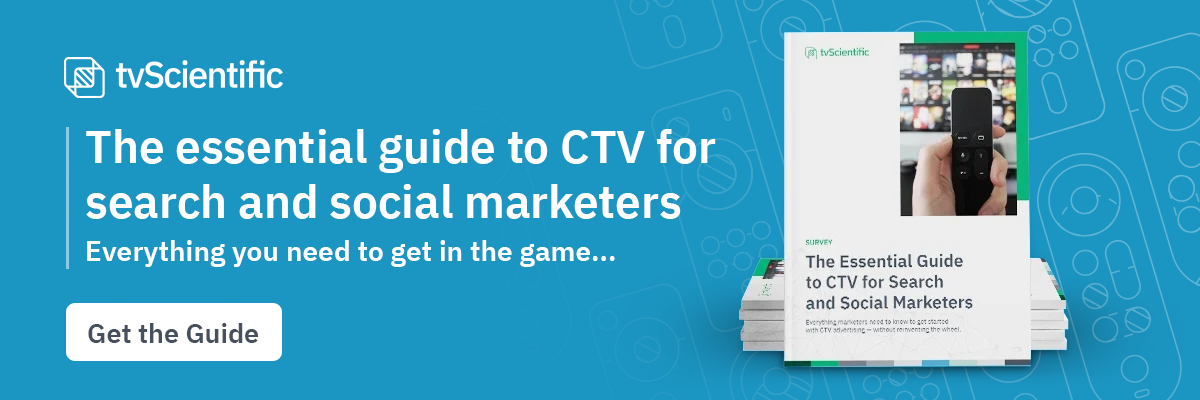Find the complete answer to “what is programmatic advertising” in our guide, which breaks down key concepts such DSPs, SSPs, ad exchanges, and more.
Learn how programmatic advertising powers the modern ad ecosystem across devices and screens
The days when the majority of ad deals were struck in smoky conference rooms or over high-stakes phone negotiations are over. Now, thousands of deals are carried out every second for placements on all kinds of devices all over the world — not by hard-bargaining folks like Don Draper and company, but by automated algorithms and dedicated platforms.
These tools, used by advertisers and publishers with space to sell, are the simple answer to “what is programmatic advertising.” But whichever side of the algorithmic bargaining table you may fall on, you’ll only be able to use these tools to your business’ advantage if you know how they work.
The Fundamentals of Programmatic Advertising
Modern ad technology makes targeting specific audiences and tracking engagement more reliable than ever before. But it also comes with a great deal of complexity: networks, exchanges, the balance between automated deals and manual negotiations, and so on. The interaction of demand side platforms (DSPs), supply side platforms (SSPs), and ad exchanges (more on each of those in just a moment) enables real-time bidding the moment potential users are ready to see an advertisement.
Here are some best practices to keep in mind as you learn more about the answer to “what is programmatic advertising” and how it could work for your business.
- Know your audience: By narrowing down exactly who you want to target for your ads, or what kind of audience your inventory of placements will reach, you can capitalize on more profitable opportunities.
- Track your results: Programmatic advertising is based on metrics. One of the most common is cost-per-mille, which means how much advertisers are willing to pay for every 1,000 views.
- Experiment: The vast quantity of individual impressions, and the automated auctions to secure those impressions, provide a dizzying amount of data. Use that data to hone your practices as you try out new formats and strategies.
Looking to expand your knowledge of programmatic advertising, especially as it relates to one of the most effective channels in the medium? We have an easy way to get started. Download our Essential Guide to CTV Advertising for Search and Social Marketers today.
To learn more about the basics of programmatic advertising, read What Is Real-Time Bidding (RTB) in Marketing?
Demand Side Platforms: Working With Advertisers
A demand side platform (DSP) is a service that allows advertisers to buy inventory from multiple sources, all in real time. A DSP allows advertisers to automatically bid on placements that meet their campaign objectives by facilitating connections with ad exchanges and networks. They simplify this potentially complicated interplay by presenting advertisers with a single dashboard to manage their campaigns.
Here are some key features and benefits of effective DSPs:
- Data collection: To demonstrate campaign performance, DSPs must collect data from all across the advertising supply chain. This can include user data such as device IDs, purchase histories, and recently used apps.
- Audience targeting: DSP audience targeting features help advertisers prioritize bids for inventory that meet their criteria. For instance, the DSP could allow an advertiser to bid more for placements in a game that the advertiser knows is favored by its target market.
- Ad fraud and brand safety tools: More than a quarter of online marketing traffic is dedicated to malicious activity, and fraud detection tools help prevent these bad actors from exploiting your budget. They also provide options to exclude inventory associated with potentially problematic keywords or websites.
Read more about demand side platforms in What Is a DSP?
Supply Side Platforms: Working With Publishers
Supply side platforms (SSPs) help publishers and media owners handle their advertising inventories. These inventories include all the places they are ready and able to display advertisements, including the commercial breaks of free ad-supported streaming TV services, rewarded ads in mobile games, and beyond. SSPs unify data from ad exchanges and advertisers in a single interface to help publishers automatically fill their inventory, deliver ads to users, and process ad revenue.
Look for these key features in a potential SSP partner:
- Platform integration: Publishers must be able to coordinate with ad exchanges, ad networks, and DSPs to ensure maximum revenue. These services use shared protocols such as OpenRTB to facilitate communication.
- Unified interface: Combining access to third-party platforms and first-party databases allows SSPs to give publishers greater control, all from a single interface.
- Header bidding: SSPs can even analyze auctions across the complete programmatic ecosystem to find the most valuable bids before contacting the ad server, simplifying and optimizing inventory management.
Learn more about supply side platforms in What Is a Supply Side Platform (SSP)? + Examples.
Ad Exchanges: Bringing It All Together
Advertising exchanges allow publishers to sell ad space to advertisers via automated processes, based on specified characteristics on either side of the bargain. Advertisers and DSPs use them to consolidate media buying while connecting with their target audiences, and publishers and SSPs use them to make their inventory available to advertisers who meet their financial and brand conditions.
Here are some of the benefits of using an ad exchange in programmatic advertising:
- Expanded reach: By removing the need for one-to-one relationships to do business between advertisers and publishers, ad exchanges massively broaden the possibilities for each.
- Brand safety: Automated bidding means advertisers may not know exactly where their ads end up, and publishers may not know exactly what ads they show. Ad exchanges’ safety tools ensure that only content agreeable to both parties appears within or alongside their branding.
- Transparent pricing: The commonly used cost-per-mille (CPM) model lets advertisers set a fixed price for every 1,000 impressions their ads receive. Meanwhile, publishers can set minimum prices to prevent being short-changed.
Find out more about how ad exchanges work with DSPs and SSPs in What Is an Ad Exchange and DSP vs. SSP: Understanding the Programmatic Ecosystem.
Your Transparent, Programmatic Partner for CTV
Programmatic advertising powers the modern ad ecosystem — and that extends far beyond websites and apps. Thanks to the power of connected television, advertisers are connecting with their target audiences right in their living rooms, in the place they’re most likely to be paying attention.
At tvScientific, we’ve created the most sophisticated performance TV platform for growth marketers, and we’ve done so with the goals of delivering value and unrelenting transparency at our core. Our all-in-one platform will help you find the right audience and then prove the impact of your campaigns through in-depth, real-time reporting and analytics.
Schedule a demo today to see how tvScientific’s approach to CTV programmatic advertising can help you meet and exceed your campaign goals.








